How to turn your blog into a profitable online business

“How can we earn money from a blog”, “Can I earn money from a blog website?” “Is blogging profitable?”
These are not some random thoughts, but some of the most asked questions about blogging. People who are just starting their blogging journey or thinking of creating a blog website are often curious about whether this is a profitable thing to do.
So, let’s answer this core question: yes, it is definitely possible to earn money from blogging.
But the process of turning your blog into a profitable online business is not necessarily a smooth journey, as you have to be familiar with different methods to monetize your blog. Moreover, there are some bloggers who earn only a few hundred dollars monthly, while others are able to generate a six-figure income from blogging by using multiple income streams.
In this comprehensive article, you’ll learn about seven different methods to earn money from blog writing, along with practical tips to accelerate this process.
1. Ad networks
Ad networks remain the most popular monetization method for both new and experienced bloggers. They’re relatively easy to implement and provide passive income once your blog starts getting good traffic.
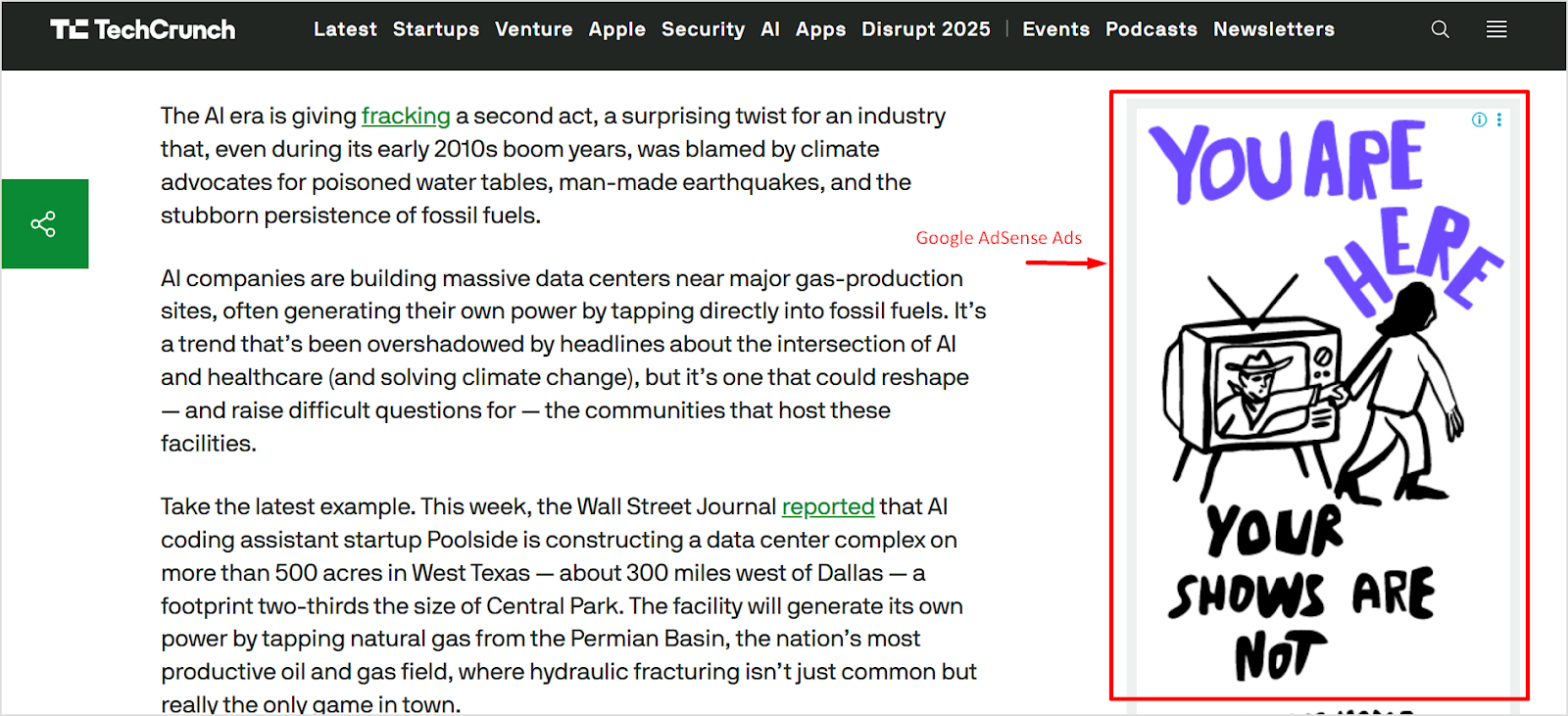
Working of ad networks
Ad networks like Google AdSense and Mediavine act as intermediaries between advertisers and publishers. They place display ads on your blog, and you earn money based on impressions (views) or clicks. Hence, the more traffic you generate, the higher your earnings potential.
Popular ad network options
- Google AdSense: Best for beginners with no traffic requirements, though earnings per thousand impressions (RPM) tend to be lower ($1-5)
- Mediavine: Requires 50,000 monthly sessions, offers higher RPMs ($15-25). It offers excellent support.
- Raptive: Premium network requiring 100,000+ monthly pageviews, highest RPMs ($20-40)
- Ezoic: AI-driven ad optimization, accepts smaller sites, and helps maximize revenue through testing
Pros and cons
Ad networks provide truly passive income once set up, requiring minimal ongoing effort. However, they can impact site speed and user experience if not implemented carefully. You’ll also need substantial traffic before earnings become meaningful. This traffic typically starts from 10,000+ monthly visitors.
Pro tip: Google AdSense does not have any minimum traffic requirement, but you should not apply for it with a completely new blog. Instead, first establish your blog and get sufficient traffic to maximize your chances of being accepted into the AdSense program.
The key is balancing ad placement with user experience. Too many ads can drive readers away, while too few leave money on the table. Premium networks handle this optimization automatically, which is why their higher traffic requirements often justify the wait.
2. Private advertising
Once you’ve built an engaged audience, selling ad space directly to companies can be significantly more profitable than ad networks. Private advertising puts you in control of pricing, placement, and the types of ads appearing on your blog.
Why private advertising pays more
When you eliminate the ad network middleman, you keep 100% of revenue instead of splitting it 50/50 or worse. A banner ad that would earn you $200 monthly through an ad network might fetch $500-1,000 sold directly to an advertiser.
How to land private advertisers
Start by creating a dedicated “Advertise With Us” page outlining your traffic stats, audience demographics, and available ad placements. Research companies that sell products your readers would love, then reach out with personalized pitches explaining the value you offer.
In terms of pricing, you have to calculate your rates based on traffic volume, audience engagement, and niche specificity. Highly targeted niche blogs can charge premium rates even with modest traffic because advertisers value reaching qualified prospects. Most bloggers charge $50-500+ monthly per banner spot, depending on placement and audience quality.
Remember that success with private advertising requires treating it like a business relationship. You must deliver on promises, provide performance reports, and make it easy for advertisers to work with you. Happy advertisers often renew contracts and refer others, creating stable, recurring revenue.
3. Affiliate offers
Statistics show that the global affiliate marketing industry is worth over $19 billion in 2025, and 64% of affiliate marketers use blogging as their primary channel. It means affiliate marketing is one of the most lucrative ways to earn money from blog posts.
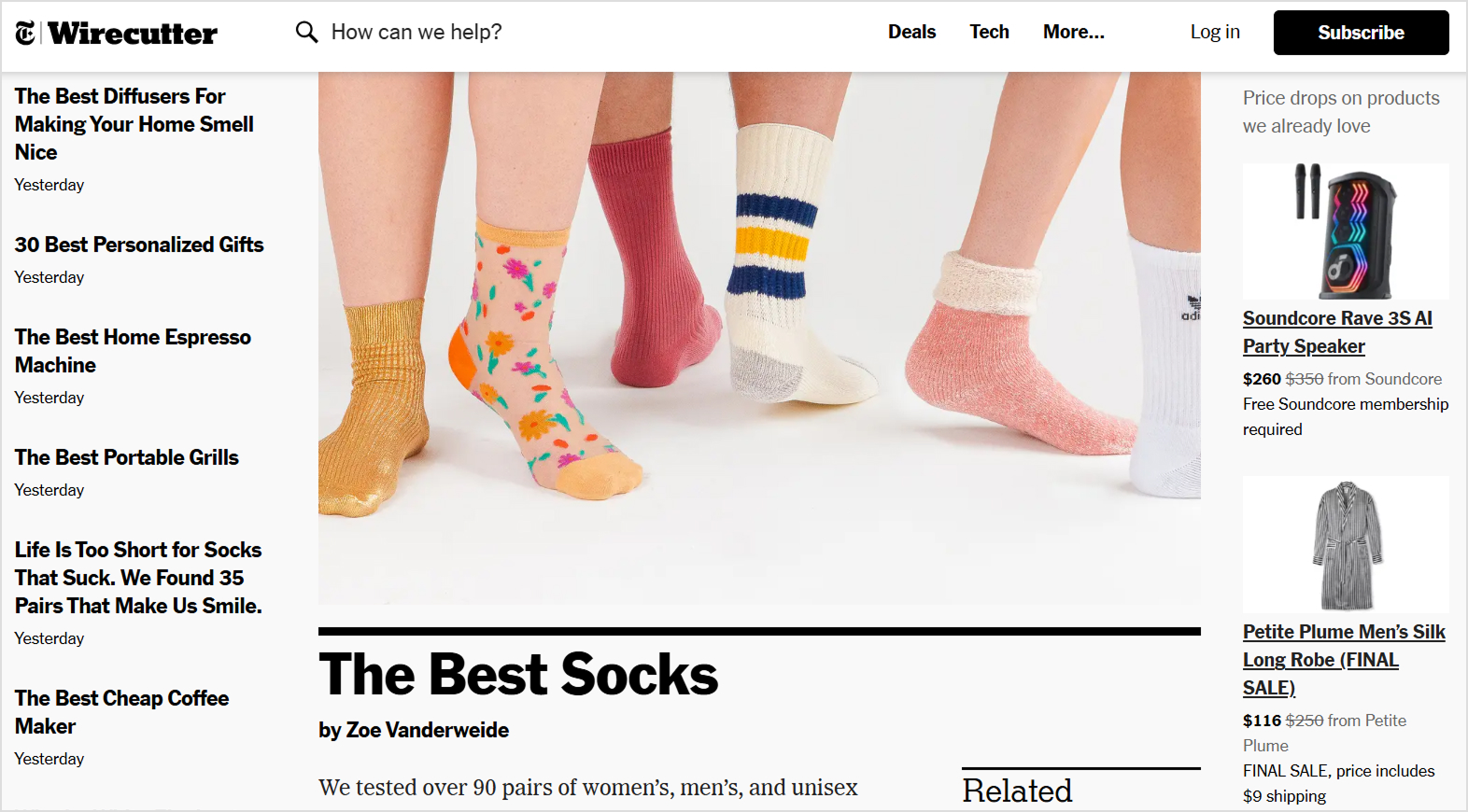
Affiliate marketing via blog posts involves recommending products you genuinely use and believe in to your audience. When readers purchase through your unique affiliate links, you can earn a commission that can even be up to 50% or more.
Top affiliate program categories:
The affiliate marketing process involves partnering with companies that offer affiliate programs. You receive unique tracking links from those companies, and when readers use your links to make purchases, you earn commissions.
You don’t have to manage any inventory, shipping, or customer service on your end. Instead, you need to focus on crafting engaging blog posts with honest recommendations to help your audience buy the right product or service.
Some of the best affiliate program categories are:
- Amazon Associates: Easy to start with a massive product selection, but low commissions (1-10%)
- Software/SaaS: High recurring commissions (20-50%) with long cookie windows. Suitable for tech blogs
- Digital products: Offers 30-75% commissions on courses, ebooks, and templates
- Financial services: Credit cards and banking apps offer $50-200+ per approved application
- Web hosting: Companies like Bluehost and SiteGround pay $50-150+ per signup
Creating effective affiliate content
The best affiliate content solves problems while naturally incorporating product recommendations. Comprehensive blog posts comparing products, tutorials showing how to use tools, and honest reviews all convert well.
Remember that transparency is crucial, so you should always disclose affiliate relationships and never recommend products solely for commissions. Your reputation and reader trust are worth more than any single sale.
So, focus on creating quality content that genuinely helps your audience, and affiliate income will follow naturally.
Advanced affiliate strategies
- Create dedicated resource pages listing your favorite tools with affiliate links
- Write comparison posts targeting buyer-intent keywords
- Build email sequences that nurture subscribers toward affiliate offers
- Use bonus incentives (free guides, templates) to increase conversions through your links
4. Create & sell info products
Information products (or “info products”) are digital educational materials that teach people how to solve specific problems or achieve desired outcomes.
Unlike physical products, info products have no inventory costs, shipping hassles, or manufacturing limitations. Once created, they can be sold infinitely with near-zero marginal costs.
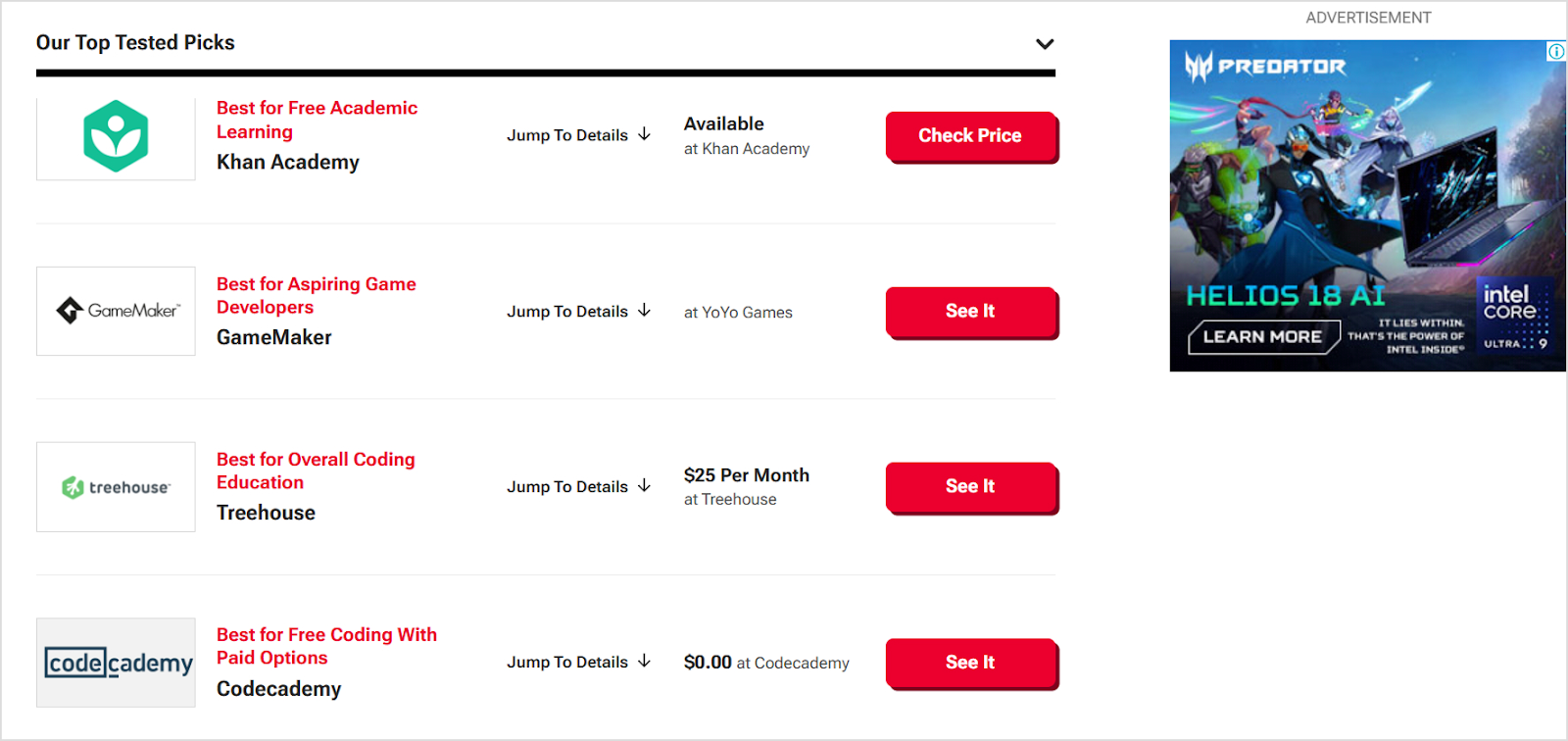
Info products are incredibly scalable, so whether you sell 10 copies or 10,000, your profit margins remain exceptional. You keep 100% of revenue minus payment processing fees, and successful digital products like ebooks, templates, and online courses generate passive income long after creation.
Types of profitable info products
Here are some of the most profitable info products you can create and sell:
- Ebooks and guides: Quick to create, easy to distribute, perfect for beginners. Price ranges from $5-100+, depending on depth and niche.
- Online courses: Higher perceived value than ebooks and can range between $100-1000+. You can also combine video, text, assignments, and community access for premium offerings.
- Templates and tools: Spreadsheets, design templates, checklists, and worksheets solve specific problems. These have lower pricing between ($5-50) but high volume potential.
- Membership sites: Recurring revenue model providing ongoing access to exclusive content, community, or resources.
Identification and creation of info product opportunities
You should pay attention to the questions your blog readers ask repeatedly. These represent knowledge gaps you can fill profitably. Moreover, review blog comments, email replies, and social media interactions to explore pain points people will pay to solve.
Once you have identified the right opportunities, you can start by validating demand before investing months into creation. For this purpose, survey your audience, pre-sell a beta version, or create a minimum viable product to test interest. Using AI can help you write blog posts fast to promote your products.
Once you’ve confirmed demand, create your product with implementation in mind. People buy transformations, not information, so focus on actionable steps that help them achieve specific outcomes.
Pricing strategy
Don’t undervalue your expertise. Your product’s value isn’t determined by creation time but by the value it provides. For instance, a $200 course that helps someone land a $75,000 job or save 50 hours monthly is worth every penny.
5. Sell services online
Using your blog to attract high-value service clients creates an immediate income stream while building your audience. Many successful bloggers earn more from services than from any other monetization method, especially in their first few years.

Service opportunities for bloggers
Some of the most popular service opportunities for bloggers are:
- Consulting and coaching: Share your expertise one-on-one or in small groups. Rates range from $100-500+ per hour, depending on your niche and positioning.
- Freelance writing: If you run a blog, you can write for others. Blog writing services can command $0.10-$1+ per word for quality content.
- Content creation services: Offer to manage content strategy, create social media posts, or produce videos for businesses in your niche.
- Design and development: If you have technical skills, your blog proves your capabilities while attracting clients.
- Speaking and workshops: As your authority grows, companies and conferences pay thousands for keynote speeches and training sessions.
Using your blog as a portfolio
Every article you publish demonstrates your expertise and communication skills to potential clients. A well-structured blog is one that showcases your ability to organize ideas, explain complex topics, and engage readers, which is exactly what clients want.
You should also create case studies highlighting results you’ve achieved. Moreover, include a clear “Work With Me” page outlining your services, process, and testimonials. You should make it highly easy for qualified leads to book discovery calls.
Pricing the services for profit
New service providers often undercharge, afraid to lose opportunities. Instead, price based on value delivered, not hours worked. If your consulting helps a business generate $50,000 in additional revenue, $5,000 is a bargain.
Start with project-based pricing rather than hourly to capture the value of expertise and speed. As you gain experience, you’ll complete work faster, so hourly pricing punishes efficiency while project rates reward it.
6. Sponsorships
Sponsored content partnerships allow you to earn money from blog websites by collaborating with brands to create content featuring their products or services. This is different from private banner ads because sponsorships integrate naturally into your editorial calendar while providing value to readers.
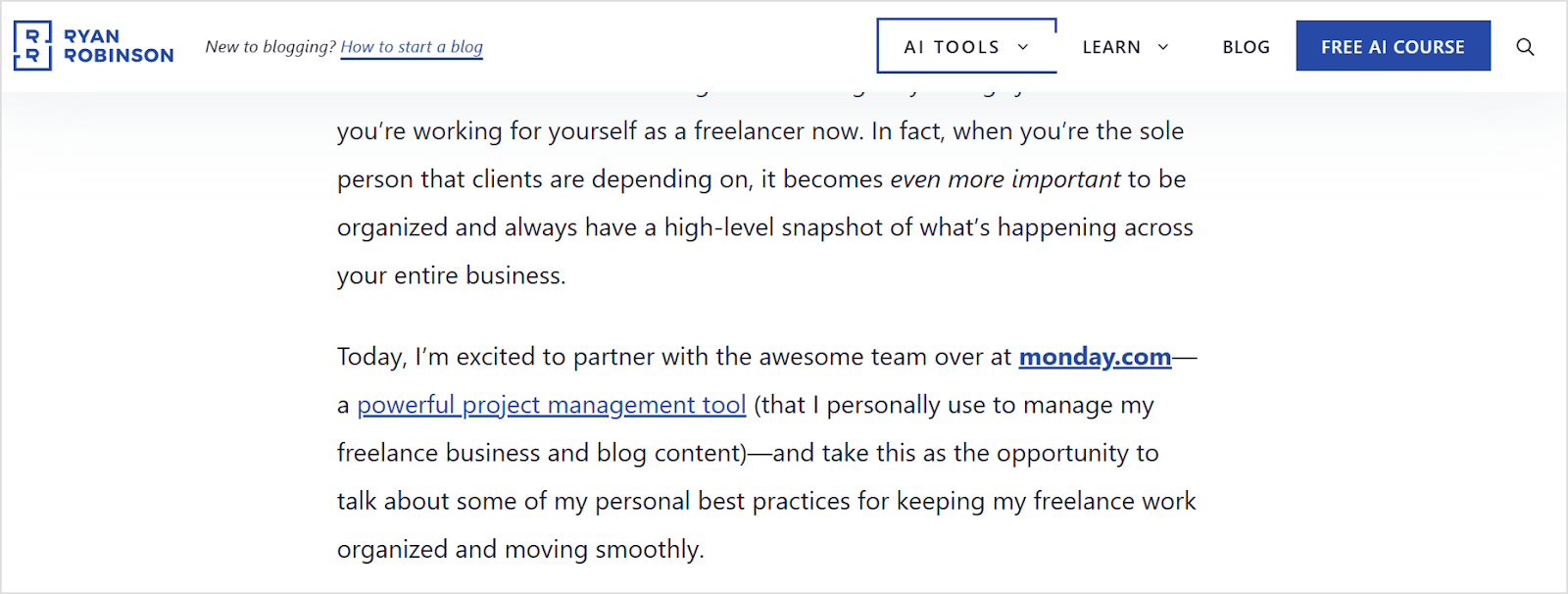
Types of sponsorship deals
You can partner up with different sponsors in different ways, such as:
- Sponsored posts: Brands pay you to write articles featuring their products. Rates typically range from $100-10,000+, depending on your traffic and engagement.
- Sponsored social shares: Companies pay for social media posts promoting their content or products to your audience.
- Sponsored newsletters: Email list sponsorships can command premium rates since subscribers are highly engaged.
- Ambassador programs: Long-term relationships where you become a brand representative, creating ongoing content over months or years.
Finding sponsorship opportunities
If you’re ready to start earning from brand collaborations, join influencer platforms like ACTIVATE, AspireIQ, or Collabor8.
These networks make it easy to connect with brands that are actively searching for bloggers and creators to work with. Other than these platforms, you should not hesitate to reach out directly. You can find companies whose products genuinely fit your content and audience, and send them a personalized pitch along with your media kit.
Creating a compelling media kit
Think of your media kit as your blog’s resume. It should highlight key stats like your website traffic, audience demographics, engagement rates, and past collaborations. Include a few testimonials from happy clients if you have them.
Keep the design clean, on-brand, and visually engaging. Remember, marketers typically go through dozens of pitches a week, so make yours easy to skim and hard to forget.
Setting sponsorship rates
When setting your rates, consider your monthly traffic, email list size, social reach, and how specific your niche is.
As a general rule, you can charge $25–$100 per 1,000 monthly pageviews for a sponsored post. If your content targets a highly specific or engaged audience, don’t hesitate to charge more, as brands will gladly pay extra to reach the right people.
Maintaining editorial integrity
Your readers trust you, so you must protect that trust by only promoting brands and products that you truly believe in and that align with your content. Always disclose sponsorships clearly, and make sure you have final say over the content.
Remember, one poorly chosen partnership can undo years of credibility and connection with your audience.
7. Subscriptions
Subscription models create predictable, recurring revenue by providing exclusive content or experiences to paying members. This monetization method builds loyal communities while generating stable income independent of traffic fluctuations.
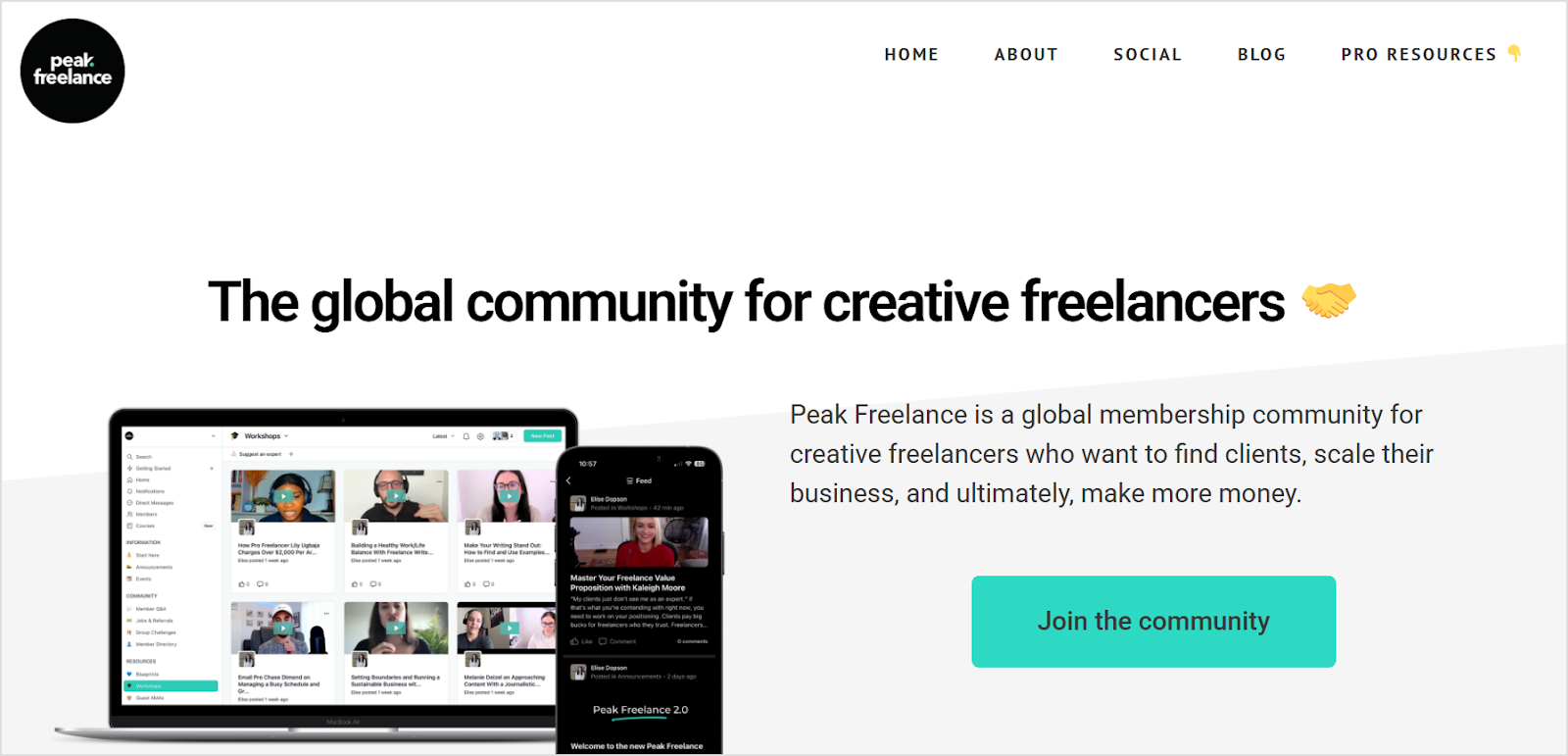
Subscription model options
Some of the major subscription models are:
- Membership sites: Members-only area with exclusive content, resources, or community access. Monthly fees typically range from $9-99+, depending on the value provided.
- Premium content: Use platforms like Patreon or Substack to offer bonus content to subscribers while keeping your main blog free.
- Private communities: Create exclusive forums, Slack channels, or Discord servers where members network and learn together.
- Content licensing: Allow businesses to republish your content for a monthly fee, common in B2B niches.
Building a successful subscription website
A thriving subscription model starts with one simple rule: offer something your free content can’t.
Think exclusive deep-dive tutorials, downloadable templates, behind-the-scenes access, or even a private community where members can connect directly with you and each other. People don’t just pay for information, but they pay for results, experiences, and relationships.
Before you launch, ask your most loyal readers what kind of premium content they’d actually value. Then, start small.
Invite a beta group to test your offer, gather honest feedback, and fine-tune everything. Reward those early supporters with “founding member” discounts, so they’ll not only help you improve your product but also become your biggest advocates when you go public.
Retention strategies
Acquiring members is exciting, but keeping them is where real growth happens. In order to retain paying customers, you should:
- Regularly engage your community with fresh, meaningful content
- Conduct exclusive Q&A sessions
- Do live workshops, member spotlights, and interactive events.
- Provide special offers to make your subscribers feel seen and appreciated.
- Always ask for feedback and act on it.
Keep an eye on your churn rate (members lost ÷ total members) every month. Generally, you should aim to stay under 5%, because even a small bump in retention can make a huge difference in long-term revenue and brand loyalty.
Tips to make money through blogging
The process of learning how can we earn money from blog websites does not end at just analyzing the monetization methods. Instead, you must be familiar with effective tips that can help you earn money from blogging.
You need to remember that success in blog monetization is not random, as it follows predictable patterns.
The following strategies separate hobbyists from full-time bloggers earning substantial incomes:
Tip #1: Pick a profitable niche
Not all niches offer equal monetization potential. For example, financial blogs might earn $30+ RPM from ads while entertainment blogs struggle to hit $5. So, you should choose topics where you can demonstrate expertise AND where audiences have money to spend on solutions.
Some of the most profitable niches typically include:
- Business and marketing
- Personal finance and investing
- Health and fitness
- Technology and software
- Professional development
Research competitor blogs to understand revenue potential because if others are monetizing successfully in your niche, you can too.
Tip #2: Focus on quality content
Quality content creation is non-negotiable. Search engines reward comprehensive, well-researched articles that satisfy user intent. Moreover, readers share and link to valuable content, amplifying your reach organically.
You should invest time in thorough research, clear writing, and helpful examples because one exceptional 3,000-word guide can outperform ten shallow 500-word posts every time. Moreover, using AI SEO writing tools can help you maintain quality while increasing output, but always add your unique perspective and expertise.
Tip #3: Build an email list early
Your email list is your most valuable asset as it’s the one audience platform you truly own. Social algorithms change, search rankings fluctuate, but your email list remains accessible regardless of external factors.
A successful email marketing strategy involves:
- Start collecting emails from day one.
- Offer valuable lead magnets (free guides, checklists, templates) in exchange for email addresses.
- Nurture subscribers with helpful content, building trust before promoting products or services.
Most blog revenue comes from email, whether through affiliate promotions, product launches, or service inquiries. This is the reason why bloggers with 10,000 engaged subscribers often earn more than those with 100,000 monthly visitors but no list.
Tip #4: Master SEO & traffic growth
No traffic means no income, regardless of how many monetization methods you implement. Understanding SEO fundamentals and consistently applying them separates successful blogs from abandoned ones.
Start with keyword research to identify topics people actively search for. Use SEO writing tools to optimize content structure, meta descriptions, and internal linking. Focus on creating genuinely helpful content that answers questions comprehensively.
Target a mix of keywords, including:
- Quick wins: Long-tail keywords with lower competition
- Money keywords: High commercial intent terms that drive conversions
- Authority keywords: Competitive terms that build credibility as you rank
Remember, consistency matters more than perfection. You can even publish one well-optimized article weekly instead of ten articles randomly.
Tip #5: Diversify monetization
Relying on a single income stream creates vulnerability. What happens if Google updates your ad account, your affiliate program closes, or algorithm changes tank your traffic?
This is why successful bloggers diversify across multiple monetization methods. For instance, you can earn money from a blog website in this structure:
- 30% from affiliate marketing
- 25% from sponsored content
- 20% from digital products
- 15% from ad networks
- 10% from services
This distribution protects you from changes affecting any single revenue source. Generally, you should start with one or two methods, then gradually add others as you grow.
Tip #6: Build authority
Authority attracts opportunities. When you’re recognized as an expert in your niche, brands approach you with sponsorships, speaking opportunities emerge, and readers eagerly purchase your products. It also helps you in link building and off-page SEO.
Build authority through:
- Consistent, high-quality content demonstrating expertise
- Guest posting on established publications in your niche
- Speaking at virtual or in-person events
- Earning backlinks from respected sources
- Engaging authentically with your community
- Sharing original research or case studies
Establishing your brand voice helps you stand out in crowded niches. Readers connect with authentic personalities, not generic content factories.
Tip #7:Use analytics to double down
Data reveals what’s working and what’s wasting your time. Review analytics monthly to identify your highest-performing content, primary traffic sources, and most profitable monetization channels.
Questions to ask:
- Which posts generate the most traffic? Create more content on similar topics
- Where does traffic come from? Double down on your best channels
- Which monetization methods produce highest ROI? Prioritize and optimize them
- What’s your bounce rate? High bounces indicate content-audience mismatches
Analytics tools provide insights, but action drives results. Use data to inform decisions, then test, measure, and iterate continuously.
Tip #8: Treat it like a business
The difference between earning $500 monthly versus $5,000+ monthly often comes down to mindset. Hobbyists write when inspired; professionals maintain publishing schedules. Hobbyists hope for income; professionals track metrics and optimize systematically.
Set revenue goals, create quarterly plans, track expenses, and measure ROI on your time investments. Decide which tasks to handle yourself versus outsourcing. Learn about content automation to free up hours weekly for strategy and relationship building.
Tip #9: Be patient but consistent
Most successful bloggers earn little in their first 6-12 months. Building traffic, authority, and income takes time, but consistency compounds dramatically. Many bloggers quit right before breakthrough moments. The ones who persist through initial slow growth often look back 18 months later, amazed at their progress.
Tip #10: Network & learn
The blogging community is remarkably generous. Other bloggers share strategies, promote each other’s content, and collaborate on projects. Isolation limits growth, while connection accelerates it.
So, you should join blogging communities, attend virtual conferences, and engage authentically with others in your niche. The relationships you build lead to guest posting opportunities, collaboration projects, and knowledge sharing that accelerate your growth.
You should also keep studying successful bloggers in your niche and analyze things like what monetization methods do they use? How do they structure content? What topics do they cover? The bottom line is that you don’t need to reinvent the wheel, but adapt proven strategies to your unique voice and audience.
How can Contentpen help?
Consistent, high-quality content is the foundation of every successful money-making blog. But creating multiple well-structured blog posts weekly while managing monetization strategies, networking, and audience building is overwhelming.
This is where our AI blog writer streamlines your content creation process using advanced AI that understands SEO requirements and your brand voice. Instead of spending hours researching, outlining, and writing, you can:
- Generate SEO-optimized content quickly: Contentpen analyzes top-ranking content for your target keywords and creates comprehensive articles that satisfy search intent while incorporating your unique perspective.
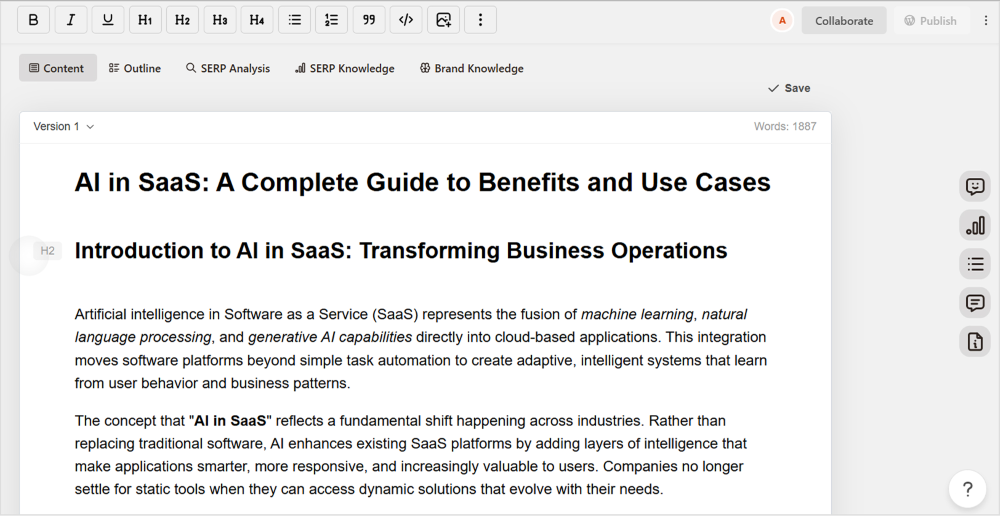
- Maintain consistent publishing: Bulk article creation lets you generate multiple posts at once, building a content buffer that keeps your blog active even during busy periods.
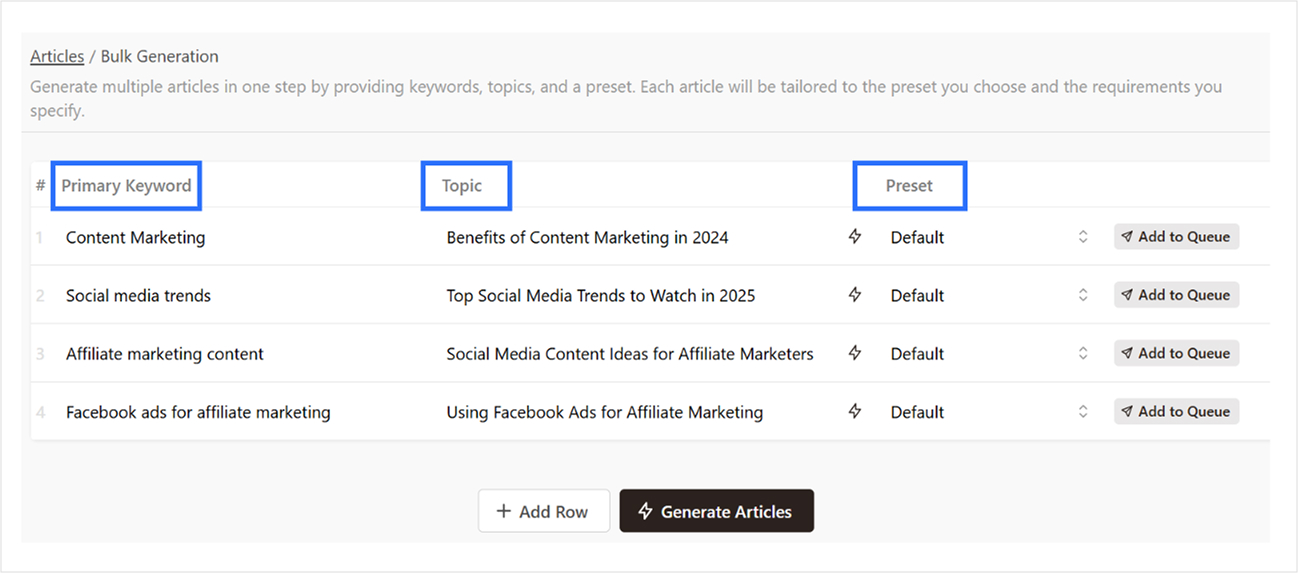
- Preserve your brand voice: Contentpen’s brand knowledge features ensure every article sounds like you wrote it, maintaining authenticity while leveraging AI efficiency.
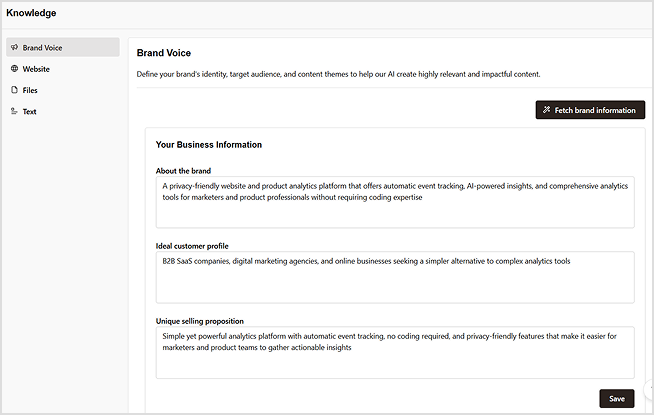
- Optimize existing content: Refresh underperforming articles to recapture rankings and improve conversions without starting from scratch.
- Streamline publishing: WordPress integration lets you publish directly from Contentpen to your blog, saving time on formatting and uploads.
The time you save on content creation can be reinvested in relationship building, monetization optimization, and strategic planning, activities that directly increase your blog income.
To sum it up, the process to earn money from blog writing is not a get-rich-quick scheme, but it’s a legitimate path to building substantial passive income, flexibility, and professional fulfillment.
The bloggers generating four, five, or six-figure incomes didn’t find overnight success. Instead, they strategically combined multiple monetization methods, consistently created valuable content, and persisted through initial slow growth.
Frequently asked questions
Blog income varies dramatically based on niche, traffic, monetization strategy, and effort invested. New blogs typically earn $0-500 monthly in their first year. Established blogs with 50,000+ monthly visitors commonly generate $2,000-10,000 monthly.
Revenue per thousand pageviews (RPM) ranges from $5-50+, depending on your monetization mix and niche. Basic ad networks like Google AdSense generate $3-8 RPM. Premium networks like Mediavine or AdThrive deliver $15-40 RPM. Blogs monetizing through affiliates and digital products can exceed $100 RPM since these methods convert visitors into buyers at higher values than display advertising alone.
Most bloggers reach $500 monthly income within 12-18 months of consistent effort, publishing 2-4 quality articles weekly. Some in lucrative niches with effective monetization strategies achieve this in 6-9 months. The timeline depends on your niche, content quality, SEO effectiveness, and monetization methods.
Bloggers receive payment from multiple sources. Ad networks (Google AdSense, Mediavine) pay based on impressions or clicks. Companies pay directly for sponsored content and banner advertising. Affiliate programs provide commissions when readers purchase through your links. Readers themselves pay for digital products, courses, memberships, and services.
Google AdSense typically pays $0.20-$2.50 per click, though rates vary significantly by niche and advertiser competition. For display ads shown but not clicked, you earn approximately $3-8 per thousand pageviews (RPM). Financial, legal, and insurance niches earn higher rates ($5-15 RPM) while entertainment and lifestyle niches earn lower rates ($1-5 RPM).
Absolutely. Many bloggers generate meaningful income within their first year, especially in profitable niches with effective monetization strategies. While first-year income typically ranges from $500-$3,000 annually for consistent bloggers, some exceed $10,000+ by focusing on SEO, building email lists, and implementing multiple income streams. The key is treating your blog like a business from day one rather than waiting until you have massive traffic before monetizing.
You might be interested in...

What is blogging? The ultimate guide
Should I start my own blog? Is blogging dead? Can I get paid for blogging? What does blogging even mean in this age of AI? These are some of the most common questions associated with blogging, and we’ll be answering all of them in detail to understand what blogging is. Blogging has changed a lot […]
Sep 17, 2025

What is a blog: meaning, elements, types, and more!
Whether you’re completely new to the digital world or looking to expand your online presence, understanding what a blog is is essential in today’s content-driven landscape. A blog serves as your digital voice, allowing you to share ideas, build communities, and even generate income. In this comprehensive guide, we’ll explore everything you need to know […]
Sep 17, 2025